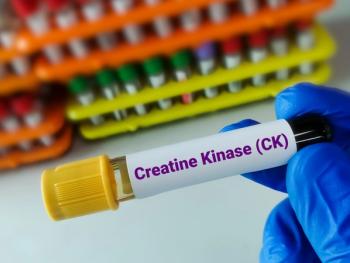
A Different Take on the Cause of Duchenne, and a Novel Small-Molecule Treatment to Match
Phil Lambert, Ph.D., chief scientific officer of Satellos Bioscience Inc., explains the mechanism of action of the company's experimental Duchenne muscular dystrophy drug, SAT-3247, and the thinking behind it.
In this first segment of an interview with Managed Healthcare Executive, Phil Lambert, Ph.D., chief scientific officer of Satellos Bioscience Inc., in Toronto, describes the mechanism of action of its experimental Duchenne muscular dystrophy drug, SAT-3247. Lambert says the proprietary small-molecule drug acts on muscle stem cells, spurring a process that results in muscle regeneration. "We're actually acting on the stem cell to initiate the signaling process that's missing with the lack of dystrophin, [giving] the stem cell a much greater chance to be able to go through asymmetric division and regenerate muscle," he says. Lambert says SAT-3247 doesn't replace dystrophin but steps in replaces the signaling function of dystrophin with muscle stem cells.
Satellos' drug is predicated on a different perspective on the cause of Duchenne muscular dystrophy, which is usually characterized as the absence of dystrophin, a protein that is necessary for proper muscle structure and functioning. "Duchenne is not really a congenital disease," says Lambert. "These kids are born and do fairly well. And then what we believe is really happening is the regenerative capacity of their muscles cannot keep up with the damage [that is occurring]."
Satellos announced positive results of a phase 1b trial of SAT-3247 on May 22, 2025, involving five adult Duchenne patients. The company news release says the results from the trial showed the drug to be safe and well tolerated, the expected pharmacokinetic profile in patients who were taking steroids at the same time and data suggesting improved grip strength.
Newsletter
Get the latest industry news, event updates, and more from Managed healthcare Executive.






















































